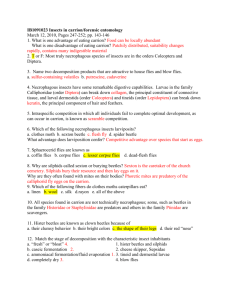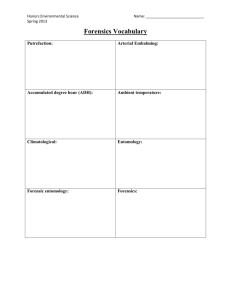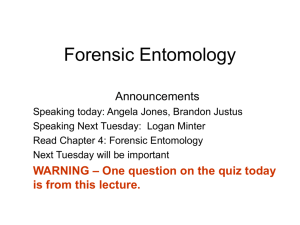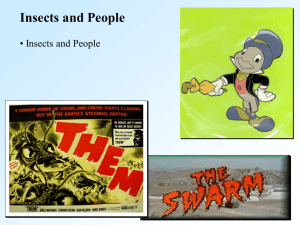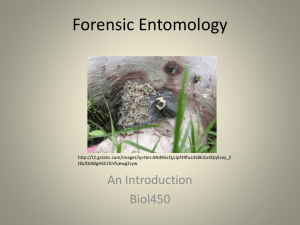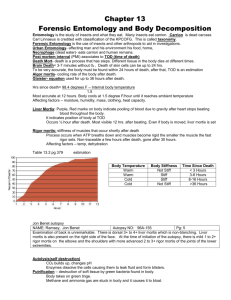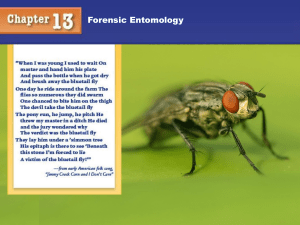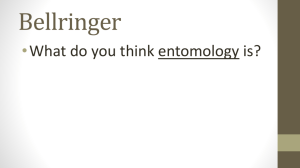How do insects communicate with a cadaver?
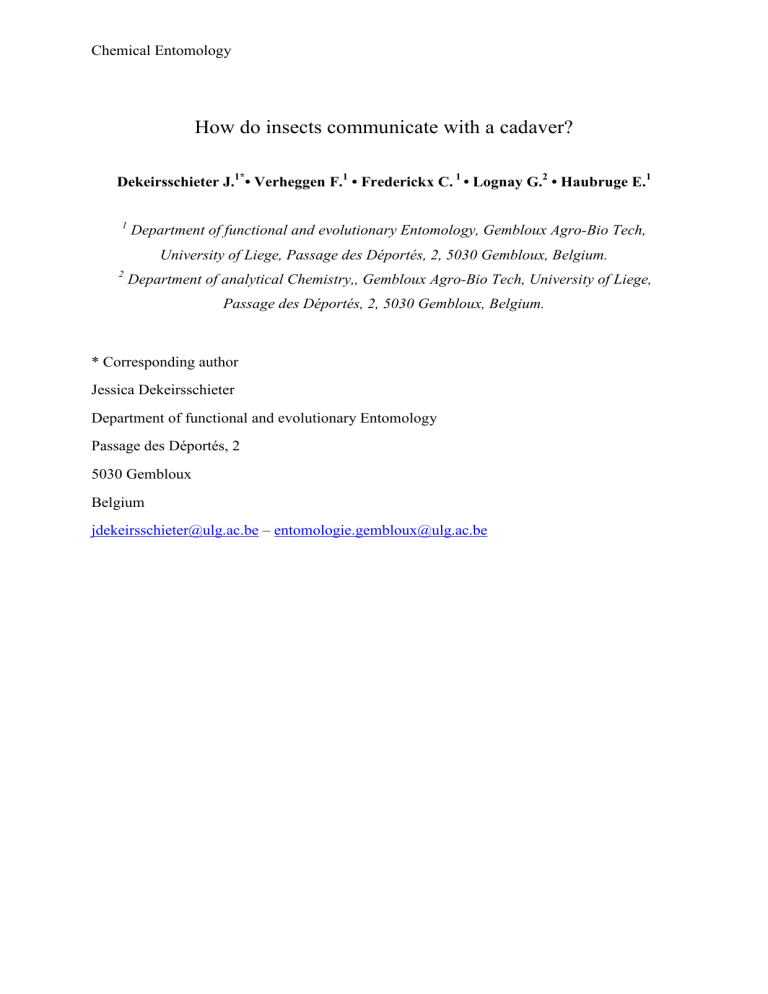
Chemical Entomology
How do insects communicate with a cadaver?
Dekeirsschieter J.
1*
• Verheggen F.
1
• Frederickx C.
1
• Lognay G.
2
• Haubruge E.
1
1
Department of functional and evolutionary Entomology, Gembloux Agro-Bio Tech,
University of Liege, Passage des Déportés, 2, 5030 Gembloux, Belgium.
2
Department of analytical Chemistry,, Gembloux Agro-Bio Tech, University of Liege,
Passage des Déportés, 2, 5030 Gembloux, Belgium.
* Corresponding author
Jessica Dekeirsschieter
Department of functional and evolutionary Entomology
Passage des Déportés, 2
5030 Gembloux
Belgium jdekeirsschieter@ulg.ac.be
– entomologie.gembloux@ulg.ac.be
Chemical Entomology
Abstract
Forensic entomology is a branch of the forensic sciences which studies insects and other arthropods (e.g. mites) in a medico-legal context. The carrion insects, mainly Diptera and
Coleoptera, have particular relationships with decomposing remains which constitute a rich ephemeral resource. These insects are attracted to the cadaver that they colonize in a relative predictable sequence called the entomofaunal succession. Undeniably, the first cadaver colonizers are blowflies (Diptera, Calliphoridae) that are attracted by the early decomposition odour (pioneer species). Other insects such as Silphidae (Coleoptera) are attracted by a decaying body during later decompositional stages (e.g. active decay, advanced decay). It is speculated that the volatile organic compounds (VOCs) released during the decomposition process attract a wide range of insects. Thanatochemistry, also named ''chemistry of death'', is poorly studied and the available information regarding the
VOCs released after death are rather limited. Thanks to the use of analytical chemistry methods ((TDS)GC-MS, GCxGC-TOF-MS), the olfactive signature of a death body may be studied during the decomposition process. The smell of death is constituted by a blend of hundreds of volatile organic compounds which change during the decay process. However, the semiochemicals which are really attractive for necrophagous insects are not yet clearly identified. Pioneer species such as blowflies may be attracted by cadaveric VOCs
(apneumones). However, later necrophagous species (e.g. carrion beetles, Silphidae) may be also attracted by different kind of semiochemicals (allelochemicals or pheromones) produced by carrion insects themselves (e.g. maggot, necrophagous insects). Various techniques of chemical ecology (EAG, GC-EAD, olfactometry) are efficient tools to investigate the role of cadaveric semiochemicals in carrion insect behaviour. A better understanding of the chemical ecology of the necrophagous insects and thanatochemistry could have many applications in forensic sciences.
References
- Dekeirsschieter J., Verheggen F.J., Gohy M., Hubrecht F., Bourguignon L., Lognay G., Haubruge E. (2009)
Cadaveric volatile organic compounds released by decaying pig carcasses (Sus domesticus L.) in different biotopes. Forensic Science International, 189, 46-53.
- Dekeirsschieter J., Frederickx C., Verheggen F.J., Haubruge E. (2010). L’écologie chimique au service de l’entomologie forensique. Le Journal des ingénieurs, in press.
- LeBlanc H.N., Logan J.G. (2010). Exploiting insect olfaction in forensic entomology. In: Amendt J., Goff M.L.,
Campobasso C.P., Grassberger M, eds. Current concepts in forensic entomology. Dordrecht, Netherlands:
Springer: 205-221.
- Frederickx C., Dekeirsschieter J., Verheggen F.J., Haubruge E. Responses of Lucilia sericata Meigen (Diptera:
Calliphoridae to cadaveric volatile organic compounds, in submission.
Keywords: Forensic entomology - chemoecology - necrophagous insect – decomposition process – cadaveric VOCs
